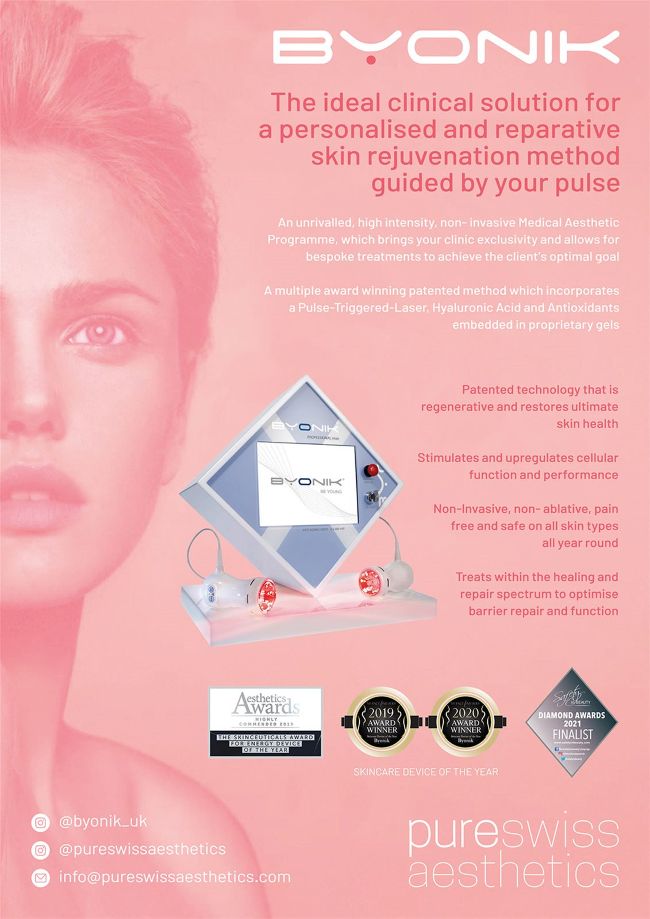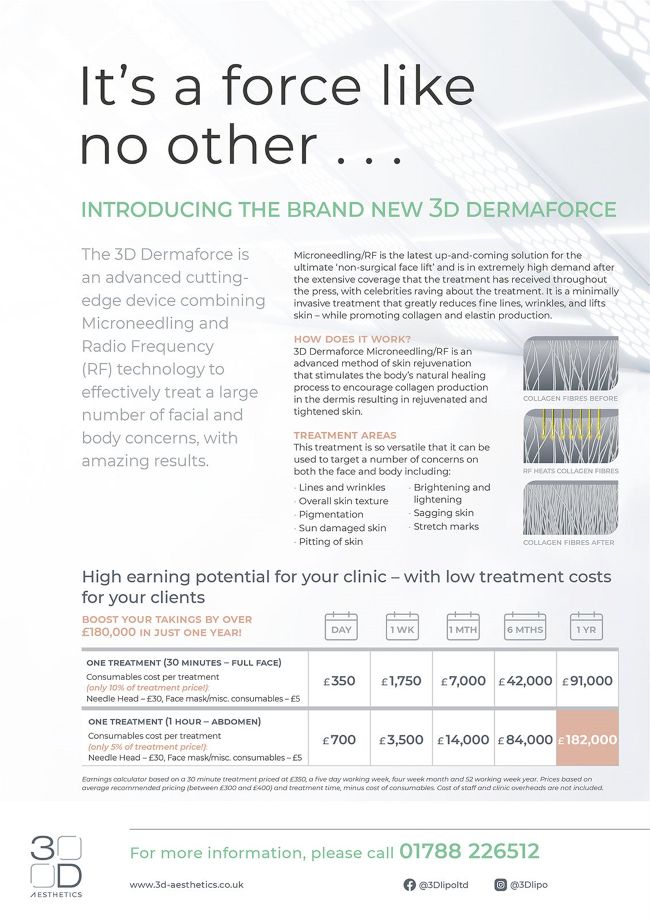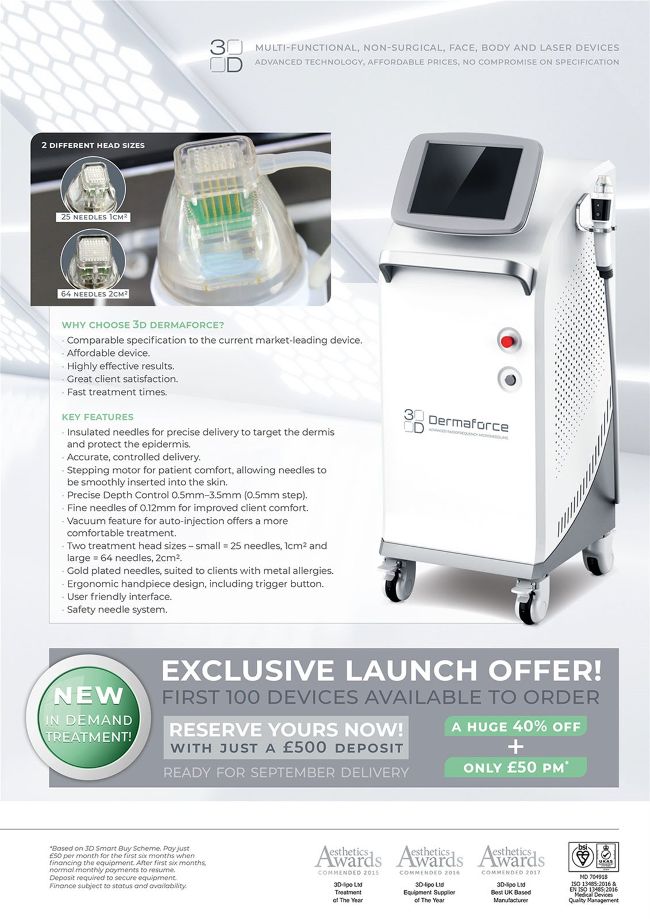PATIENT PSYCHOLOGY
Pieces of the puzzle
Focusing on patient–practitioner compatibility can give a better insight into patient psychology, says Dr Nestor Demosthenous
DR NESTOR DEMOSTHENOUS
Dr Nestor Demosthenous (MBChB, MSc Aesth Med, BSc Hons Neuro Edin) is one of Scotland’s most experienced cosmetic doctors and an international speaker and published author in the field of aesthetic medicine. He opened Dr Nestor’s Medical Cosmetic Centre in Edinburgh in 2016. He also holds regular clinics at London’s PHI Clinic and more recently, Ouronyx. Follow him on Instagram: @dr_nestor_d
One of the less acknowledged but highly important aspects inherent in the role of a cosmetic doctor is an ability to dissect the thinking of the patients entrusted to their care. In a world that has become dominated by social media, body dysmorphia is a big concern, so it is crucial that doctors can speak frankly and openly to their patients during consultation to understand why they are choosing to have intervention and to ensure that those reasons are valid and are not a result of an unrealistic vision a patient has of themselves. Not to mention, the cultural phenomenon of “Zoom face” has pushed the psychology behind cosmetic treatments into the spotlight.
With a special interest in patient psychology, Dr Nestor Demosthenous was approached to be one of a selected group of visiting aesthetic practitioners at new luxury clinic Ouronyx London, which places a high emphasis on “next generation” personalised treatments and the relationship between patient and practitioner. We spoke to Dr Demosthenous to discuss the important and dutiful role doctors have in understanding patient mindset and how this assessment can be used to positively influence a patient’s aesthetics journey.
Why do patients have the treatments they do?
ND: I always want to understand the “why”. In every case, almost without exception, something powerful and visceral has pushed a patient into action. There is always something that has led them into thinking “I don’t like my lines. I need [toxin]” or, “I don’t like my jowls, I need filler.” My fundamental role, prior to treatment, is to understand what this something is. Once I understand it, I can talk the patient through treatment options and their various outcomes to devise a plan that will address and alleviate their issue and make them feel terrific about how they look.
What is the approach at Ouronyx and how does this fit in with your own?
ND: The cornerstone of successful treatment is understanding patients, so once I understand my patient’s reasoning – their “why, as it were –I can treat them with confidence. My approach to treatment centres on holistically treating the face, rather than focusing on a single feature. I want to celebrate the individual beauty of each of my patients and enhance their facial features so they can become the best version of themselves. I also never want my patients to look as if they have “had work done”, rather my intervention will look natural, respecting proportions, angles and ratios to accentuate natural beauty. This modus operandi aligns perfectly with the Ouronyx philosophy.
Ouronyx offers a unique diagnostic approach, which blends anatomical, psychological, and behavioural sciences, to fully cater to each patient’s aesthetic needs. This holistic, scientific approach allows Ouronyx to understand the patient’s personality type and whether they fall into a green, red, yellow, or blue colour code, which will indicate the type of person they are, i.e., whether they are a flamboyant person, an instant decision maker, someone who needs facts and details, etc. This is something we have been doing in healthcare intuitively for a while now, as it allows us to gauge a patient’s journey and to gain a better understanding of how much or how little information they need regarding the treatment to feel comfortable and informed – Ouronyx has formalised this process to ensure it is more accurate than ever.

The Ouronyx philosophy hinges on understanding what drives the patient and what they feel (i.e., “I feel I look tired, sad”, etc.) rather than focusing on what they want (i.e., “I want lip filler”, “I want to get rid of lines”, etc.). It’s a completely tailored approach. Once we understand how the patient feels, we can start to optimise bespoke journeys for them to achieve a refined and unique outcome. Furthermore, the advanced technologies available at Ouronyx allow us to help patients realise their best self – we can help them identify distinctive features and preserve these features with a relaxed formulation that will ensure the result is as natural as possible.
How does Ouronyx “match” patients to doctors, and why this is important?
ND: Every clinician who works at Ouronyx has taken psychometric testing, which is a short questionnaire of approximately seven or eight questions. This allows the team to profile each of us as individuals and then they can use this insight to try to match up our profiles with the patient profiles. This leads to a better patient-doctor compatibility. By having a compatible relationship between doctor and patient, you build trust and understanding, which will ensure an optimum patient journey moving forward.
What’s the difference between the treatment a patient wants and the treatment their doctor feels they actually need?
ND: What people feel is 100% accurate, but from my experience what they think isn’t always in line with how they feel. For example, I might receive a visit from a 60-year-old who wants her jowls taken away because they make her feel like she looks tired. If we break it down, though, you will see that her thought process is inaccurate. She feels like she looks tired, and she is probably faultless in her assessment, but it is not the jowls that are the sole issue.


She perhaps has hooded upper eyelids, hollowing underneath the eyes and eyebags as well as jowling, each of which are signs of tiredness and give a cumulative result of an appearance of fatigue. So, she has read her face correctly but jumped to conclusions that are not wholly correct. This is the surface we need to scratch with every patient – to understand their “why”. Once we know, we can outline to them the measures that we can take that will give them the best possible result and ensure they achieve the outcome they want, even if it isn’t the exact treatment they expected.